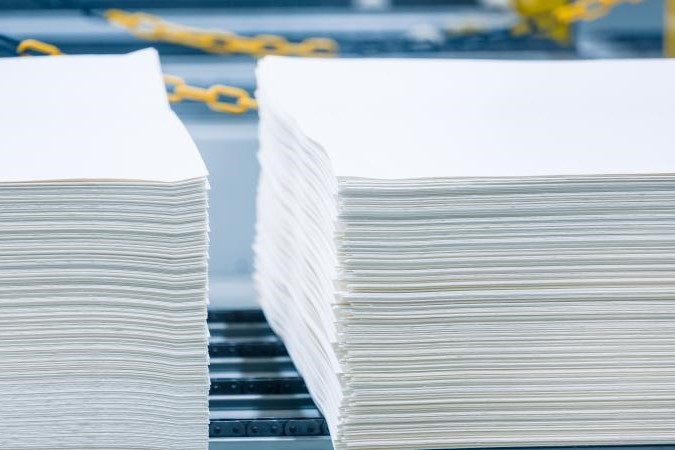 From the forest to every household
From the forest to every household
Do you know how the raw material of countless everyday products is made? Read our Q&A explaining the basics of modern pulp production at UPM.
What is pulp?Wood consists of fibres embedded in lignin. Pulp is made on the Fibre line of a pulp mill, where fibres are extracted from wood, and the lignin is removed.
Pulp – a clean, renewable and biodegradable raw material – is a big part of our everyday lives, used, for example, in tissue and hygiene products, food wrapping and packaging, carton board, labels and stickers, printed products, and as binding agents in foodstuffs and pharmaceuticals.
How is the wood raw material handled?
At UPM, all wood used for pulp production comes from sustainably managed forests and plantations. When harvested, the tree logs are first weighed, measured, and inspected. From the wood yard logs are fed into a debarking drum and chipper, and the chipper cuts logs into small chips for more efficient pulping.
In addition to wood chips, we use sawdust from sawmills and plywood mills for making pulp.
How are wood fibres processed?
Wood chips are mixed in the pulp mill’s digester with an alkaline solution, white liquor, and cooked in a high temperature, which dissolves the lignin and separates fibres. During the cooking process approximately half of the wood dissolves. The pulp is then washed, screened for quality and bleached.
The spent cooking chemicals and dissolved wood material is called black liquor. This substance is recovered and burned in a recovery boiler to produce energy that keeps the process running.
Washed and bleached pulp is taken next to the drying machine, which produces thick and heavy sheets. Dry pulp bales are easy to transport and use by different industries. Sheets are packed in bales, taken to storages, and then transported to markets all over the world.
How are chemicals used and recycled in pulp production?
Chemical recovery is a crucial component of the chemical pulping process. It recovers process chemicals from the spent cooking liquor for reuse.
For example, in softwood production, soap is separated from the black liquor and converted to crude tall oil, which is a renewable source for biodiesel and bionafta production.
Evaporated black liquor is burned in the recovery boiler to recover the inorganic chemicals for reuse in the pulping process.
How is water used in the production of pulp?
Water is an essential element in pulp production. There are, for example, several washing stages in between the different process steps.
High washing efficiency with a low amount of added fresh water is essential during production.
Only a small portion of the water used in UPM’s production leaves the process as effluent and has to be replaced with fresh water. Enhancing water management has been one of our top priorities. Now our mills use 35% less water per tonne of pulp than 10 years ago.
How are emissions treated?
As a procedure, effluent treatment is at least as important as pure water intake and availability. All wastewater is treated in mechanical and biological effluent treatment plants before being released back into watercourses.
Emission levels in wastewaters are regularly monitored and reviewed, both internally and by relevant authorities.
Also airborne emissions are monitored continuously. Most of UPM's airborne emissions result from energy generation. UPM aims to continuously reduce these emissions, and improvements are especially visible in sulphur dioxide and nitrogen dioxide emission reduction.
How does a pulp mill produce renewable energy?
UPM is the second largest generator of biomass-based electricity in Europe. Our pulp mills are modern, extremely energy-efficient facilities that produce plenty of surplus clean energy, mainly generated by burning black liquor.
Burning black liquor generates high-pressure steam to generators for electricity production, resulting also in low pressure steam used in different processes in a pulp mill.
Read about how pulp is made on our website
